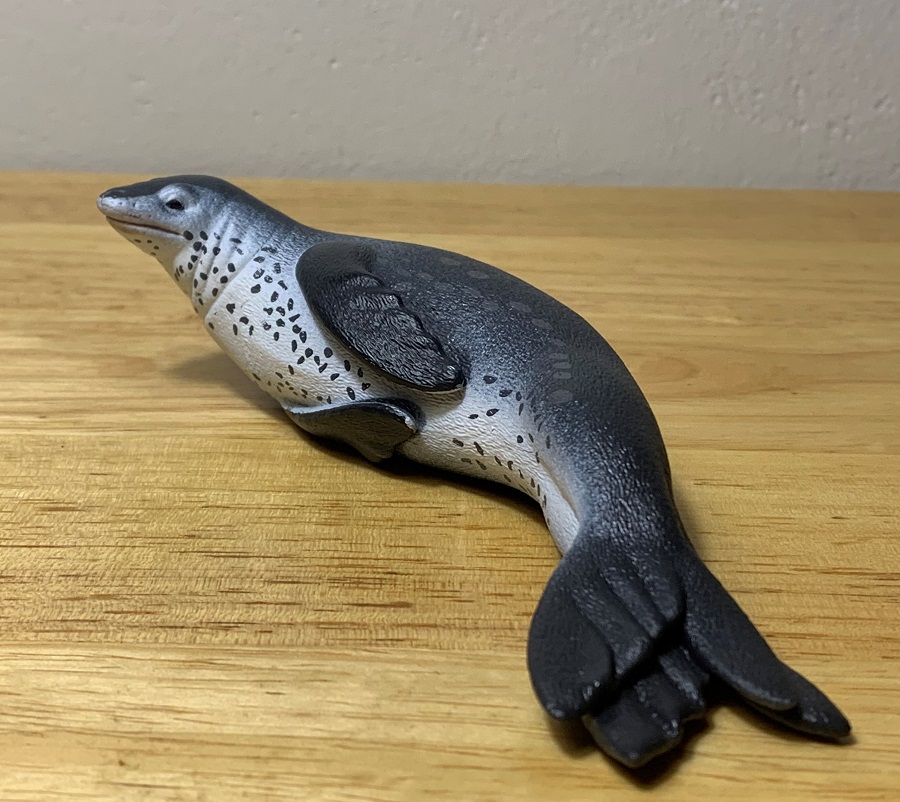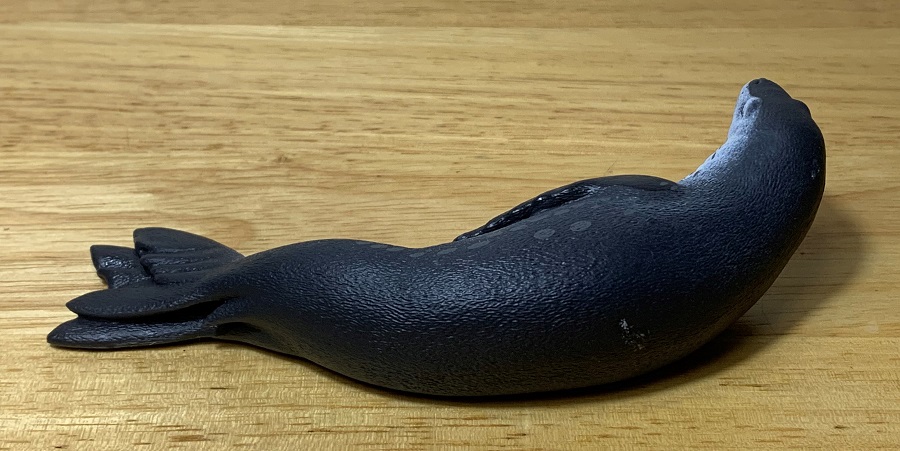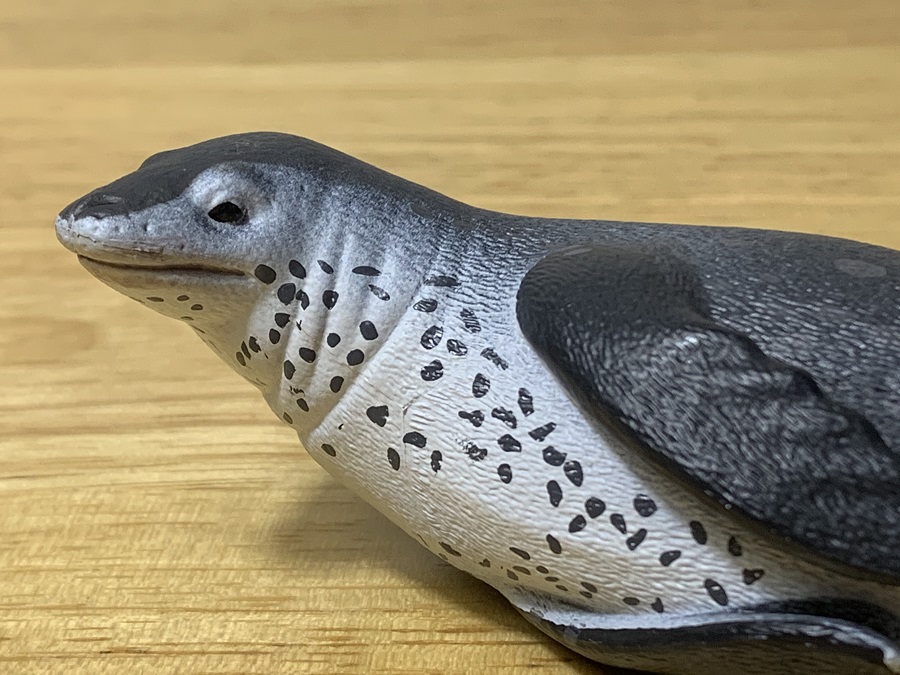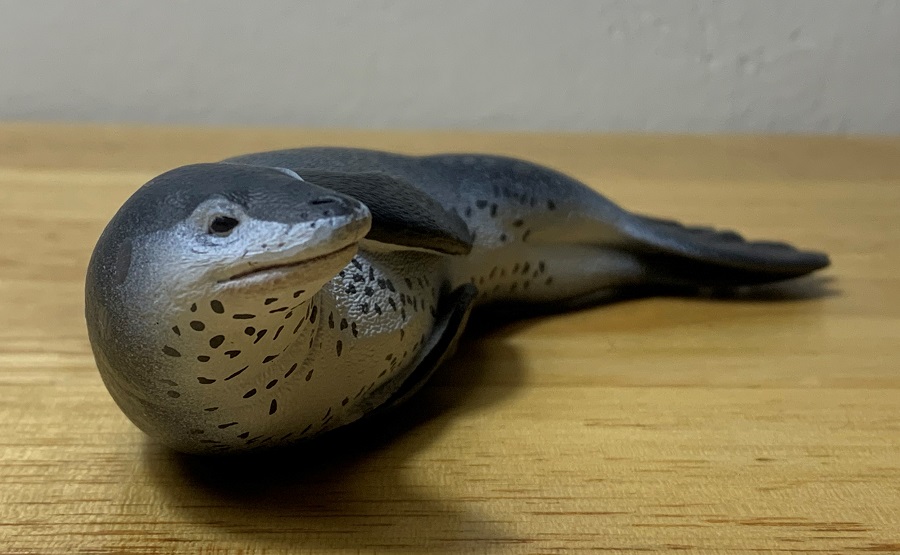The leopard seal (Hydrurga leptonyx) is the antithesis of what we think of when we think of most pinnipeds: seals, sealions, and walruses. The only member of its genus, the leopard seal is about as far from a chubby harbor seal, or playful California sea lion, as you can get. It’s a sleek apex predator, with an unsettling reptilian appearance and a predatory diet that includes penguins and other species of seals. Attacks on humans have occurred, with at least one fatality. As a prey animal it only contends with killer whales. Leopard seals serve to remind us that pinnipeds in general are members of the order carnivora, the order to which all major predatory land mammals belong. Pinnipeds are most closely related to Musteloidea, which includes weasels and their relatives, raccoons, and skunks, among others.

For collectors there are a few leopard seal options available. The Papo and CollectA leopard seals are both presented in a dynamic swimming posture, mouth agape, and then there is the 2018 Safari figure we’re looking at today. For me the choice was obvious. Safari’s leopard seal with its relaxed posture displays much better than its contenders (which would be better suited for play) and appears more realistic and faithful to the real animal’s appearance.

The Safari leopard seal measures 5.75” (14.6 cm) in length and about 6” (15.24 cm) when measured nose-to-tail along the curve of its back. After the southern elephant seal the leopard seal is the second largest pinniped in Antarctica, measuring 7.9–11.5’ (2.4–3.5 meters) with females being slightly larger than males. This puts the figure at 1/15-1/23 in scale.

Leopard seals inhabit the pack ice that surrounds Antarctica but have been observed in Australia, New Zealand, South Africa, and South America. Except for mothers and pups, leopard seals are a solitary species. Young seals mostly eat fish, squid, and krill. Leopard seals even have adaptations in their molars for sieving krill from the water, much like the related crabeater seal.

The Safari leopard seal is presented in a relaxed and content posture with the head lifted and surveying its surroundings. It has the same kind of comfortable confidence that only apex predators seem to enjoy, looking much like a lion relaxing on the African savanna. The body is appropriately elongated and muscular, adding to the sea-serpent like appearance of leopard seals.

The head appears long, low, and snake-like and wrinkles are bunched up around the neck where the figure’s head is turning towards the body. The fore-flippers rest against the body while the hind-flippers rest sprawled out behind it. Leopard seal whiskers are short and clear, so they’re not apparent on this figure but the holes they grow out of are. The squinting eyes have a thousand-yard-stare look about them, and small slit shaped nostrils are sculpted on the snout. The entirety of the figure is sculpted with fine, short hairs.

The figure shares the countershading coloration exhibited by so many marine predators. Dark dorsally, and light on the underside. Spotting is present along the sides, although their dark coloration makes them hard to discern. The spotting continues along the underside as well. Leopard seals are aptly named, what with their spotted coat in addition to their predatory nature.

The Safari leopard seal is not only the best rendition of the species currently available, it’s also one of the best pinniped figures I’ve encountered in the hobby thus far, and one of the figures that inspired me to collect animals. The Safari leopard seal is still in production and sells for about $8 USD.

Disclaimer: links to Ebay and Amazon on the AnimalToyBlog are affiliate links, so we make a small commission if you use them. Thanks for supporting us!




Spectacular! When I started by non-arthropod synoptic collection, I originally went with the Papo figure but have since replaced it with this one, and I am glad I did (it’s even come up on the daily Museum posts already LOL).
Nice review!
Kitan Club produced a nice leopard seal for an Antarctica collection; it’s very dynamic and comes chasing a swimming penguin (but it’s a small gashapon figure that requires assembly)
Great Article! Thank you 🙂